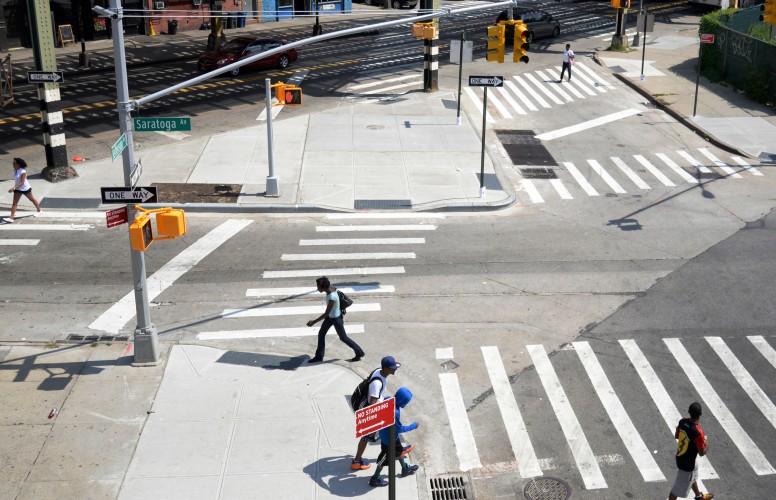A report from the New York University’s Furman Center released last week examines New York City’s gentrifying neighborhoods, analyzing shifting trends in population, housing and income. And although the report is primarily focused on housing, it recapitulates some commuting trends we’ve touched upon here: more New Yorkers are commuting without a car; subway ridership continues to climb while bus ridership is down; and subway performance is worsening.
Citywide, the share of workers who commuted without a car (either by transit, bike or foot) increased from 63.8 percent in 2000 to 70.8 percent in 2014. Unfortunately, transit investment has not kept up with growing ridership. Subway lines serving the Bronx, Manhattan’s east side and southern Brooklyn performed significantly worse compared to the rest of the city. Last year, less than 60 percent of those trains arrived within five minutes of their scheduled time, and between 2010 and 2015, on-time performance of subways in these neighborhoods dropped more than 30 percent.
Two Manhattan neighborhoods–Lower East Side/Chinatown and Stuyvesant Town/Turtle Bay–tied for the largest share of car-free commuting residents, each with 91.6 percent. Staten Island’s South Shore had the fewest car-free commuters with just 24.3 percent. Along with Queens Village in Queens, South Shore was one of only two neighborhoods in which a smaller percentage of residents commuted without a car in 2014 compared to 2000.
The majority of neighborhoods, however, experienced at least minor increases in car-free commutes. Nine neighborhoods saw at least a 10-percentage point jump in the share of commuters who rode transit, biked or walked between 2000 and 2014: Mott Haven/Melrose, Hunts Point/Longwood, Kingsbridge Heights/Bedford, Riverdale/Fieldston, Morris Park/Bronxdale, Bedford-Stuyvesant, Bushwick, East New York/Starrett City and Ridgewood/Maspeth–which also had the largest neighborhood growth in car-free commutes, with a 12.6-percent increase.
While the report doesn’t break down commuting habits by specific mode, it reconfirms that transportation options must expand along with the city’s population. Without adequate investment and improvements to the city’s transit or safe streets network, however, it remains unclear whether such growth can be sustained.


Great news.
Now how about MoveNY and parking reform?